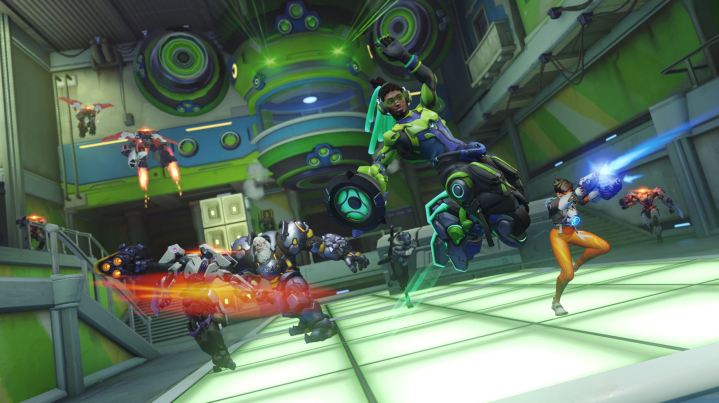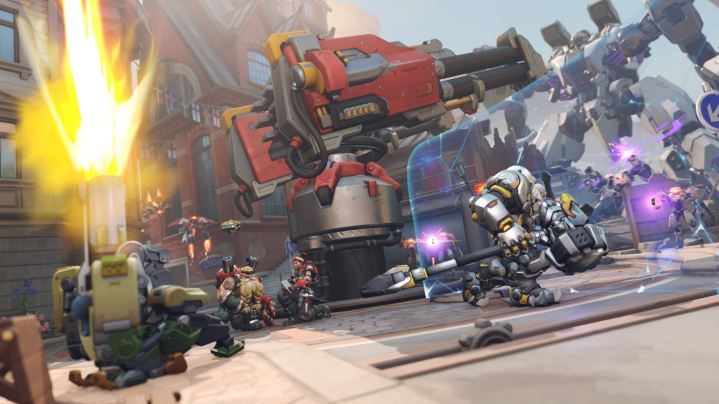Overwatch 2’s launch year didn’t exactly go as planned.
In the lead-up to its October 2022 launch, the excitement for the hero shooter sequel was sky-high, largely thanks to a planned Hero mode. As its release date approached, several choices during development would erode that hype. That would include the departure of Overwatch director Jeff Kaplan, a controversial swap to five-player teams, and plans for a revamped battle pass and microtransaction system. Even more complaints arose when new characters were initially locked behind a battle pass and Blizzard ditched its planned PvE campaign — which was arguably the biggest justification for creating the sequel in the first place..
Overwatch 2 may have disappointed fans by ditching its original vision, but it still has its hooks in me despite all that. It remains a genuinely fun shooter that’s better than its tarnished reputation implies. It’s consistently expanded since launch, with new characters, maps, and modes that have kept me coming back in spite of Blizzard’s mistakes. There’s still plenty of work to be done to restore player trust, but it’s far from the “dead game” some players are eager to paint it as.
Battle pass is better
I’ll readily admit that Overwatch 2 is far from perfect, but the bitterness surrounding it often overshadows the improvements it made to its predecessor. That started with the removal of loot boxes. While Battle Passes are an old and tiring way to earn unlockables, it is, unfortunately, still the best format that we have with free-to-play titles. Each season’s Battle Pass has historically rewarded players with seven or eight skins that are completely unique for only $20 — and that’s not including the new hero that arrives every few seasons, as well as other rewards.

Any form of microtransaction is sure to stir controversy, but I’ll be honest: battle passes are a better option than loot boxes. If you regularly played the original Overwatch, loot boxes often spat out duplicate rewards that were converted to “credits.” Those would be used to purchase something you were eyeing for one of your go-to heroes,or you would wait and save up for an event-exclusive skin that was heavily sought-after. In the last year, I’ve found I would rather pay a flat fee to earn set cosmetics on top of being able to purchase skins rather than hoping to pull them through loot boxes or grind out credits. The new way that Overwatch 2 structures its rewards makes me feel like I don’t have to play every single day to get what I want or to finish the Battle Pass before the season ends.
Blizzard has also integrated legacy credits (which were earned from the original Overwatch) into the sequel, allowing players to buy specific skins. Those were recently implemented in the Battle Pass too, allowing players to earn them.
Blizzard could still do better. Overwatch is known for its great skins for characters and keeping so many of them locked to a season battle pass can give casual players the feeling that they are missing out. However, Jared Neuss, an executive producer for the game, confirmed earlier this year that is something the team is working on. Hopefully, they follow the example that 343 Industries has set with Halo Infinite by allowing people to buy Battle Passes and complete them at any time.
The PvE factor
I can’t talk about Overwatch 2 without mentioning the elephant in the room: Hero mode’s unceremonious cancellation. Despite originally planning to launch a full PvE mode complete with skill trees, Blizzard quietly scrapped the idea in favor of smaller story events. The mode was one of Blizzard’s main justifications as to why it was creating Overwatch 2 in the first place, so its cancellation has earned the sequel a bad reputation that’s been hard to scrub off.
It didn’t help that the first PvE event, Invasion, was a mixed bag. The missions themselves were plenty of fun, ending with a bang at Torbjorn’s factory in Sweden. What was less exciting, though, was the story itself. While we know a lot about Overwatch’s cast of heroes already through the YouTube shorts, books, comics and more, the Invasion arc was seemingly the beginning of the game’s story as we know it. For instance, the first major story moment shows Lucio being recruited to the new Overwatch team — despite the fact that he’s been a part of the franchise from the very beginning. It seems that Blizzard is starting its narrative from the top despite players knowing these characters for nearly eight years. The decision isn’t particularly bad, but it makes me feel like there could be a lot of time used up down the line to “officially” introduce characters that we have known for years.

Even with the jarring choices Blizzard has made with starting the narrative fresh, the PvE gameplay is genuinely a joy to play and its story does a great job at showing how big the threat is by the end of the Invasion arc. It’s a small start, but it left me excited to see what the future holds. It is just a shame that those promising missions are set to drip out slowly, which may make it difficult for Blizzard to build momentum.
While Overwatch 2’s biggest selling point has yet to meet expectations, there’s still a lot about what’s been released so far that is worthy of praise. There have been 11 new maps added since launch (not including story missions or arcade-specific maps) for free and six (going on seven) new heroes. Seasons have also added event challenges where players can earn exclusive rewards. Blizzard has consistently tweaked characters for the better, and each new hero has been a worthy addition. Flashpoint, while still relatively recent, has been a refreshing new game type and a strong replacement for two-point capture.

Blizzard not going through with its original content plan remains a hard pill to swallow, but outside of that, every other change or addition has been a positive one. And there’s still work to be done. Overwatch League is in a weird limbo right now, and the game’s professional competitive future is unknown, which signals that it might not be in the healthiest spot. As a casual player, though, I’ve had a blast in the past year following the development team down its path, and they have continued to introduce new features to keep Overwatch 2 exciting (its new LE SSERAFIM collaboration is especially a highlight).
If you checked out of Overwatch 2 early amid bad press, now’s a good time to hop back in and appreciate the shooter for what it is rather than what it isn’t. Despite a rocky year, I’m optimistic about the future of Overwatch 2. And I think fans, new and old, should be too.
Editors' Recommendations
- Overwatch 2’s story-driven PvE missions are being abandoned by Blizzard
- Why Overwatch 2’s show-stealing new hero took an extra four years to debut
- Overwatch 2’s story missions are the light at the end of a very long, dark tunnel
- PlayStation Showcase teased Sony’s live service future, but I’m not impressed yet
- With PVE mode canceled, Overwatch 2 just isn’t the game for me




